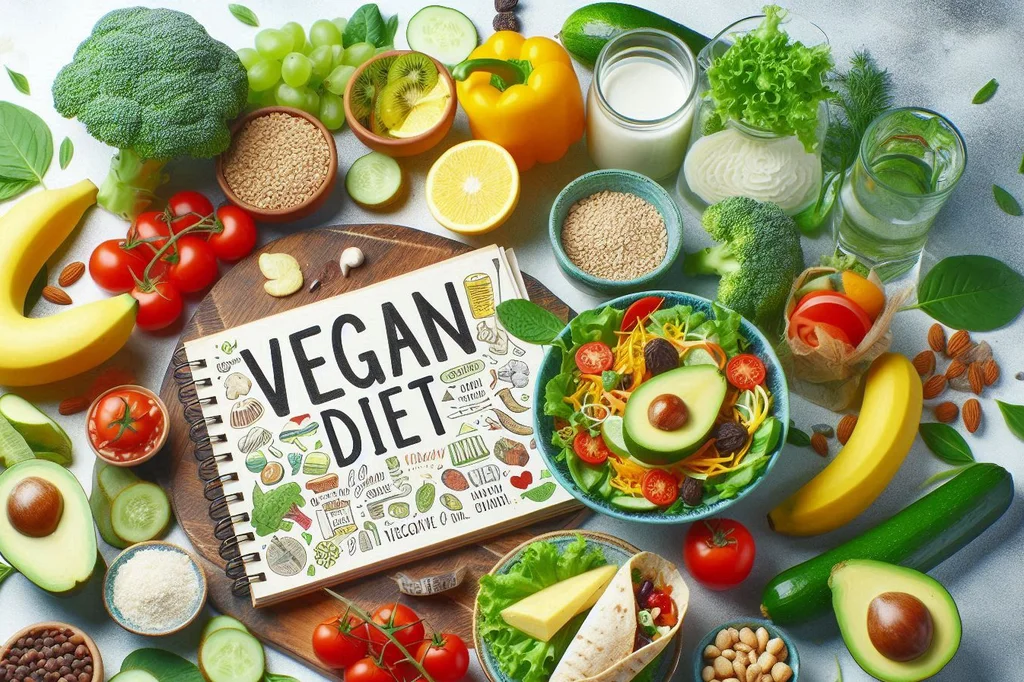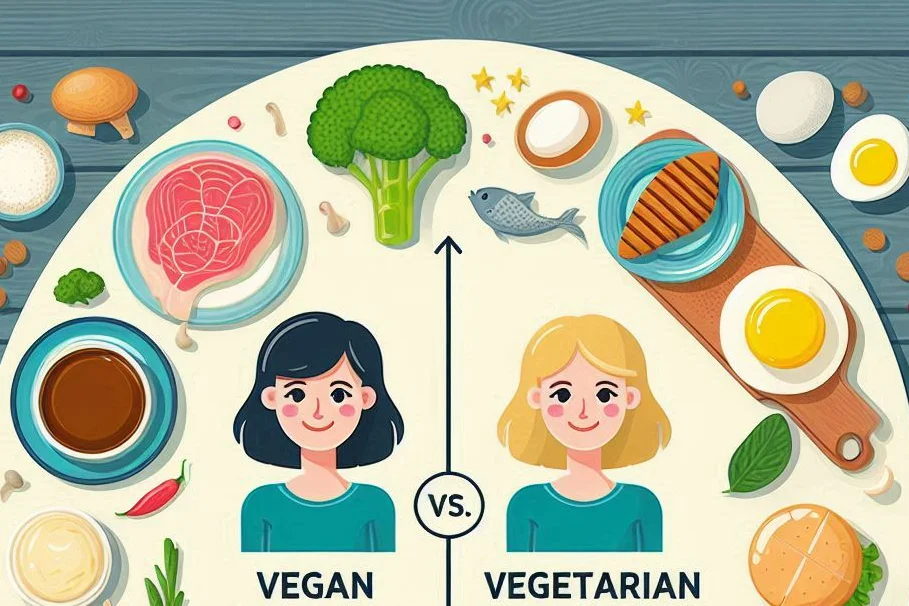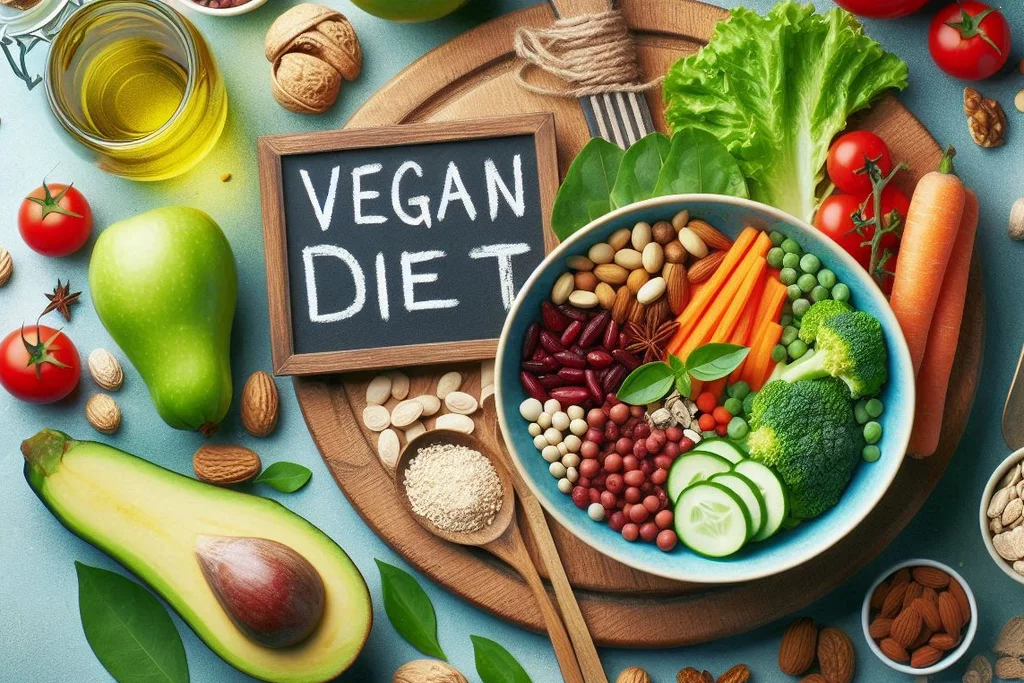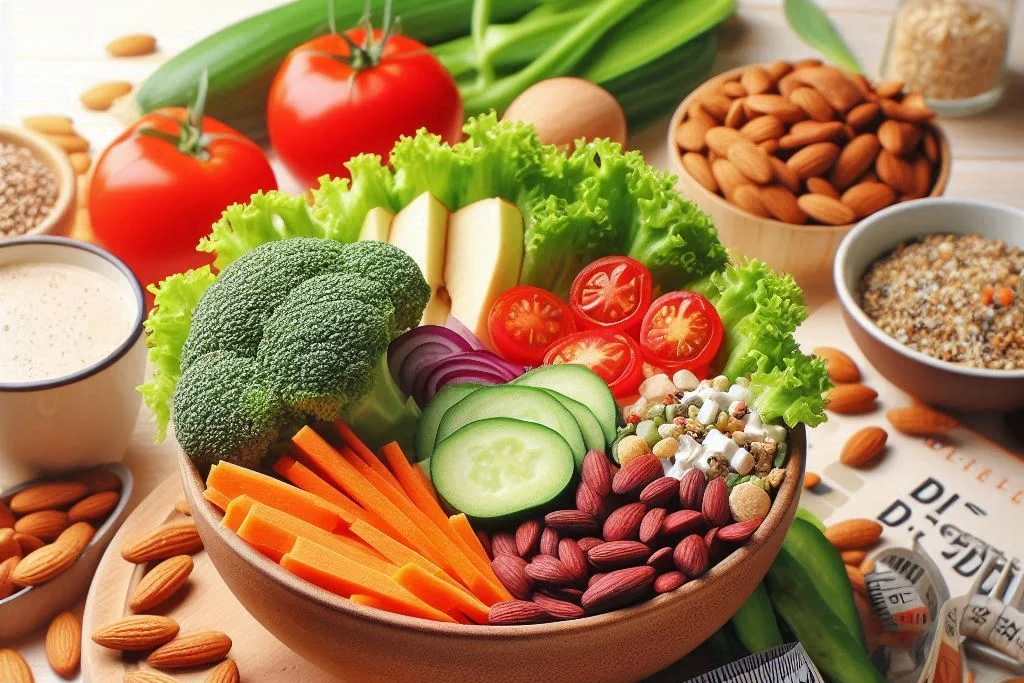Diet Guide – Vegan Diet
How vegan diet supports a healthier lifestyle? Discover the benefits, risks, & tips for balanced plant-based eating in this essential guide!

This article is part of a series. Check them out all!
What Is a Vegan Diet?
A vegan diet consists entirely of plant-based foods—fruits, vegetables, legumes, whole grains, nuts, and seeds. All animal-derived products, including dairy, eggs, and honey, are excluded.
Currently, around 3% of the U.S. population follows this dietary pattern. Motivations vary. For some, improved wellness is a key goal, as scientific studies have suggested a reduced risk of certain chronic conditions when plant-based eating is prioritized. Others are guided by concerns related to animal welfare or ecological sustainability.
Consideration of this eating style often brings up questions regarding suitability. While potential health advantages have been identified, a few obstacles may be encountered during the transition.
Vegan vs. Vegetarian
Vegan and vegetarian diets share similarities but differ in scope. While both avoid meat, poultry, and seafood, vegetarian diets typically allow for dairy and eggs. In contrast, a vegan approach excludes all animal-sourced items, including products like honey.

What Is Veganism?
For some, the vegan diet is pursued with health in mind. For others, it represents a broader lifestyle grounded in compassion for animals and care for the environment. Ethical veganism involves abstaining not only from animal-derived foods but also from materials like leather and wool, and from products tested on animals. The environmental aspect is also a major influence, as research has indicated that plant-based diets contribute far less to climate change compared to those involving animal products.
Various forms of the vegan diet are practiced, each with its own focus and food choices. Among the most common are the following:
- Whole food vegan diet
Emphasis is placed on a wide variety of unprocessed plant foods, including fruits, vegetables, whole grains, legumes, nuts, and seeds. - Raw food vegan diet
Foods are consumed raw or cooked only at low temperatures, typically below 118°F (48°C), allowing enzymes and nutrients to remain intact. - 80/10/10 diet
This version limits fat-dense plant foods such as avocados and nuts. The majority of intake is drawn from raw fruits and tender leafy greens. It is also known as the low-fat, raw food or fruitarian diet. - Starch solution
A low-fat, high-carbohydrate approach that focuses on cooked starches like rice, potatoes, and corn instead of fruit. - Raw till 4
Modeled after both the 80/10/10 diet and the starch solution, this approach encourages raw foods earlier in the day, followed by a cooked plant-based meal after 4 p.m. - Thrive diet
Built around raw or minimally cooked plant-based whole foods, prepared at low temperatures to preserve nutrient density. - Junk food vegan diet
Highly processed vegan items such as mock meats, cheeses, fries, and desserts form the core of this pattern, while whole foods are often limited.
Each version offers a different path to plant-based living, with nutritional quality varying significantly depending on the level of food processing involved.

Is Vegan Diet Easy to Follow?
Adjusting to any significant dietary shift can present initial challenges, particularly when changes are made abruptly. A gradual approach, with attention given to the wide variety of plant-based options available, has been found to ease the transition.
A vegan diet excludes entire food groups, such as meat and dairy. For individuals previously accustomed to an omnivorous eating pattern, thoughtful planning is often required to select suitable plant-based alternatives. Social dynamics may also present difficulties, as studies have indicated that food restrictions can sometimes contribute to feelings of disconnection during shared meals.
Over time, with basic skills in preparing staple vegan dishes, continued adherence tends to become more manageable. This way of eating does not require calorie counting, macronutrient tracking, or strict portion control. Research has supported that fullness and satisfaction are still achievable, even when fat intake is kept low.
An increase in vegan-friendly restaurants, bakeries, and grocery offerings has been noted. Dining out, celebrating special occasions, or preparing meals for a household can be accomplished within a vegan framework, although some situations may benefit from advance planning or bringing personally-prepared dishes.
How Does the Vegan Diet Work?
Nutritional needs on a vegan diet are met through plant-based sources rather than from animal-derived products such as meat, dairy, or eggs.
General guidance suggests that meals be composed with half the plate filled by vegetables or fruits, one quarter by a protein-rich plant source, and the remaining quarter by grains or starchy foods.
“Typically, people will just remove the animal protein without replacing it, which can lead to feeling hungry and unfulfilled. Always think of what we plan to replace what we are removing from our plate.”
Suggested protein alternatives include beans, lentils, peas, tofu, tempeh, seitan, and various seeds and nuts such as hemp hearts, pistachios, and pumpkin seeds. Selection may be influenced by desired flavor profiles or textures, and preparation methods can be adjusted accordingly to enhance satisfaction.

Can the Vegan Diet Support Weight Loss?
Weight loss may occur on a vegan diet, particularly when meals are centered around whole, minimally processed plant foods rather than items containing added sugars or excess fats. Many studies examining the health effects of vegan eating are based on a low-fat, whole-food approach, which excludes products such as vegan mayonnaise, imitation meats, chips, sweetened desserts, and high-fat sauces.
Short-Term Weight Loss
Unlike rapid weight loss programs, the vegan diet promotes gradual and steady changes. As a result, healthier and more sustainable outcomes may be achieved. Notable improvements have been documented within a few months.
One secondary analysis from a 2019 study revealed that a vegan diet resulted in greater weight loss over 16 weeks than the Mediterranean diet. In a separate randomized, controlled study involving adults with excess weight, reductions in body mass index, body weight, body fat, and visceral fat were observed after following a vegan plan for the same duration.
Another large randomized trial focused on adults diagnosed with Type 2 diabetes or a BMI of 25 or higher. After 18 weeks of adhering to a vegan diet, participants demonstrated measurable decreases in body weight, total and LDL cholesterol, and HbA1C levels.
Long-Term Weight Management
Weight reductions associated with a vegan diet may remain stable over time, provided changes are maintained consistently and weight is not lost too quickly.
One long-term study conducted in 2006 followed nearly 22,000 adults for five years. Those who maintained a strict vegan diet gained significantly less weight than participants in any other dietary category. In a separate analysis, a 7% drop in the likelihood of obesity was found for each additional year the vegan diet was sustained.
Health Benefits of the Vegan Diet
Adoption of a vegan diet has been associated with a range of health advantages, particularly when the focus remains on whole foods, fruits, and vegetables. Research has supported the following benefits:
- Decreased inflammation: Multiple studies have indicated that a reduction in c-reactive protein—a marker of inflammation—can be achieved through a vegan diet. This decrease may lower the risk of inflammation-related conditions, including heart disease. Relief from pain and inflammation linked to rheumatoid arthritis has also been reported.
- Reduced heart disease risk: In a comparative study between a vegan diet and one recommended by the American Heart Association, the vegan approach led to a 32% reduction in c-reactive protein levels. These findings suggest potential heart-protective effects connected to the anti-inflammatory properties of plant-based eating.
- Lower mortality risk: A long-term prospective study involving over 12,000 adults tracked for nearly four decades revealed significantly lower rates of cardiovascular and overall mortality among those who adhered to a healthy plant-based diet when compared to those consuming any animal-derived foods.
- Reduced Type 2 diabetes risk: Observational research involving more than 200,000 participants found that plant-focused diets were linked to a substantially lower likelihood of developing Type 2 diabetes.
- Improved brain health: Findings from a 2022 study of over 3,000 older adults indicated enhanced cognitive function and memory performance among those who consumed more plant-based foods.

Health Risks of the Vegan Diet
Although a vegan diet offers a range of health benefits, some studies have highlighted a higher risk of certain nutrient deficiencies. Attention may be needed to ensure adequate intake of protein, vitamin D, vitamin B12, calcium, and iron.
Key Nutrients to Consider
Careful selection of plant-based foods is recommended, as some nutrients already lacking in the standard American diet may become even more challenging to obtain through vegan choices alone.
- Protein
High-density sources of protein are often found in animal products such as poultry, seafood, and red meat. Plant-based alternatives—including tofu, legumes, and tempeh—may require increased volume to match protein needs. - Vitamin B12
Naturally found only in animal-based foods or in products fortified during processing. Fortified plant-based milks and other enriched items can help, though supplementation is widely recommended. “Those on a vegan diet should take a vitamin B12 supplement.” - Vitamin D
Common sources include fish, egg yolks, and fortified dairy. In a vegan diet, vitamin D intake must be supported through UV-exposed mushrooms and fortified foods. - Calcium
The adequacy of calcium intake among those following plant-based diets remains debated. Most adults require about 1,000 mg per day. Leafy greens, tofu, sesame seeds, and fortified plant milks serve as alternatives. A 2020 study linked vegan and vegetarian diets to a higher incidence of bone fractures. Lower calcium intake and reduced body fat—known to offer protective effects—were noted as contributing factors. Once BMI and calcium intake were adjusted for, the difference in fracture risk became less pronounced. - Iron
With red meat often serving as a primary iron source in many diets, increased attention may be required to ensure adequate intake of iron-rich plant foods like lentils, beans, and dark leafy greens.
Food Components Often Over-Consumed
One advantage of a whole-food vegan diet is the naturally lower presence of added sugar, saturated fat, and sodium. However, reliance on processed vegan options—such as frozen meals and packaged snacks—may lead to overconsumption of these components, potentially offsetting the diet’s intended health benefits.
Summary
A vegan eating pattern excludes all foods and beverages derived from animals. The following categories are typically avoided:
- A vegan diet focuses on plant-based foods while excluding all animal products.
- It has been linked to benefits like reduced inflammation, heart health, and weight loss.
- Key nutrients such as protein, B12, and calcium require careful attention.
- Processed vegan foods may reduce the diet’s health impact.
- Planning and balance help support long-term success on a vegan diet.
